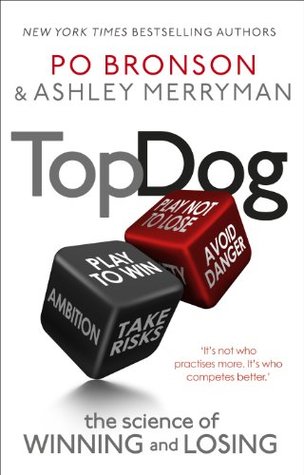More on this book
Kindle Notes & Highlights
Read between
March 28 - April 23, 2020
It’s not pure thrill they seek, but the ability to control the environment within a thrilling context.
The cutthroat world of the ballroom remained terrifying no matter how long they’d been at it.
Competition is special. It has a danger and excitement all its own.
To be successful, you have to be able to perform when it counts.
the stress of competition doesn’t go away with experience.
everyone has that stress response, but we can interpret it differently, which drastically affects our performance.
The winner is not the person who practiced more. It’s who competes better.
The same fundamental skills that matter in edgework turn out to matter in any competitive situation: the ability to avoid being paralyzed by fear, and the capacity to focus attention.
the hormones that drive us to compete are the same hormones that drive us to collaborate.
bad behavior is not a long-term strategy for competitive success.
Adaptive competitiveness is characterized by perseverance and determination to rise to the challenge, but it’s bounded by an abiding respect for the rules.
Maladaptive competitiveness is characterized by psychological insecurity and displaced urges.
the distinction between the maladaptive and adaptive is ignored by the catch-all “competitiveness.”
aretas—attaining excellence through competition—became the supreme Grecian virtue.
The Ancient Greeks did not fear that competition bred immoral behavior. They believed that competition taught moral behavior.
most of us do improve in competition. We do naturally rise to the occasion.
Competition doesn’t kill creativity: it facilitates creative output by supplying motivational drive.
Competition also teaches people to be comfortable with conflict
Success in competition requires taking risks that are normally held back by fear.
Every competitor is vulnerable to a tendency to conserve energy; going all out with total focus is virtually impossible to do continuously.
becoming a better competitor is about controlling your psychological state, which in turn alters your underlying physiology.
it’s only during competitions that we are socially permitted to try our absolute hardest, uncloak our desire to win, and be at our most intense.
The real benefit of competition is not winning—it is improved performance.
Competition liberates, or generates, hidden reserves of additional effort.
competition doesn’t benefit everyone.
contests only work when it’s an even matchup, or a close race, such that the extra effort becomes the decider between winning and losing. People need at least a fighting chance.
competing against too many others has the opposite effect—effort suffers.
Rivalries seem to create reliable upsets.
those who are on their home turf receive a huge windfall. Their takeaway may be worth up to 160% more
once this sense of territorialism is activated, you become more competitive;
winning at home is more thrilling to pursue and more fulfilling once achieved.
sometimes when you’re performing or competing, it really helps to have a loved one there to support you. And sometimes it doesn’t.
Learning is already stressful enough as it is. But once you’ve mastered something, you may benefit from additional pressure to perform at your best.
intermittent supervision works even better than continuous supervision.
motivation rarely operates on a single level.
It was for discovering the COMT enzyme and how it worked that Julius Axelrod was bestowed the Nobel Prize.
in the late 1990s, it was discovered that there are two kinds of COMT enzymes. Some of us have busy, hardworking ones. Some of us have lazy, slow-working ones.
For people whose enzymes work fast, their brains can handle the stress, because the enzymes can get rid of the extra dopamine.
For people with these fast enzymes, their normal dopamine levels are chronically lowered.
On most days, having slow COMT enzymes is actually a good thing. But under stress and pressure, with that extra flood of dopamine, they crack.
Some people’s brains work best in the absence of stress. While others cannot reach peak performance without stress.
In practice, he dials the stress way up. In games, he dials the stress down.
Players must learn to compete. They won’t succeed if they are just taught technical skill. He has succeeded by teaching girls to compete and to handle the stress of a tight game.
He would put the women through an extremely hard practice, but then he’d invite the team over to his house for pizza or banana splits.
women don’t get elected because they refuse to put their names on the ballot in the first place.
Men will gamble on long odds—even stupid odds. Women won’t.
Women do seem to compete less—because they only compete when they know they have a decent chance to win.
the psyche gets worn down when you overcompete—when people compete too much,
It’s in these infinite games, the evidence suggests, that women survive better than men.
“So you’re telling me there’s a chance.”


